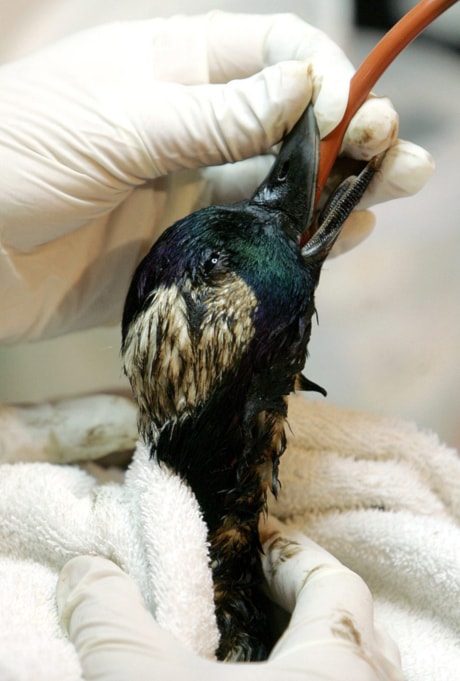EDMONTON — Three times as many waterfowl died last spring on a Syncrude Canada tailings pond in northern Alberta than the 500 birds that were originally announced.
The carcasses of 1,606 ducks were actually collected from the toxic oily waters of the oilsands giant’s Aurora pond in the weeks after the birds landed on April 28, 2008, Syncrude Canada chief executive Tom Katinas said Tuesday.
Katinas released the updated figure a week after an Alberta court granted the consortium three more months to enter a plea on federal and provincial wildlife charges that were laid after the environmental disaster made headlines around the world.
“I want to apologize for this terribly sad event that happened on our site,” Katinas told a news conference.
“It is a stain on our good reputation that Syncrude has earned over its many years of good operations. The drowning of the waterfowl last April shouldn’t have happened and it’s unacceptable.”
Crown prosecutors in the case against Syncrude gave the company permission to release the final dead bird count.
Katinas declined to explain why Syncrude is only now acknowledging the larger number and that it should have done a better job of protecting migrating waterfowl.
He said it took time for many of the carcasses to surface on the pond as they began to decompose.
Katinas said other bodies of water in the area were still frozen last April, so the Aurora pond was one of the few places the ducks could land. A spring snowstorm also delayed the deployment of noise-making cannons that are placed around such ponds to scare away birds.
He announced that more of the cannons will be deployed and will now be monitored year-round. The company will also use high-tech scarecrows that move in the wind and will test a radar system to detect flocks of migrating birds.
Alberta Environment Minister Ron Renner said the province was aware of the higher duck death toll in July, but he was not aware of the number until Tuesday.
Renner said the company would not face any additional charges over the higher number of dead waterfowl.
“The charges are laid irregardless of the final tally on bird fatalities,” he said from New York, where he is on a trip to discuss Alberta’s climate change strategy with American business and political leaders.
“It wouldn’t have made a difference from my perspective if the final count had been less than 500. We still would have taken exactly the same action.”
Renner said he is satisfied with the measures Syncrude is taking to better protect migrating waterfowl, but said it would have no bearing on the province’s approach to the case.
Environmental groups called Syncrude’s announcement disturbing.
A Greenpeace Canada spokesman said the group is shocked by the higher duck death toll and questions why it took almost a year to make the information public.
Mike Hudema said instead of putting more noise-making cannons in place the government should enact tougher regulations governing tailings ponds and end the practice of allowing corporations to police themselves.
